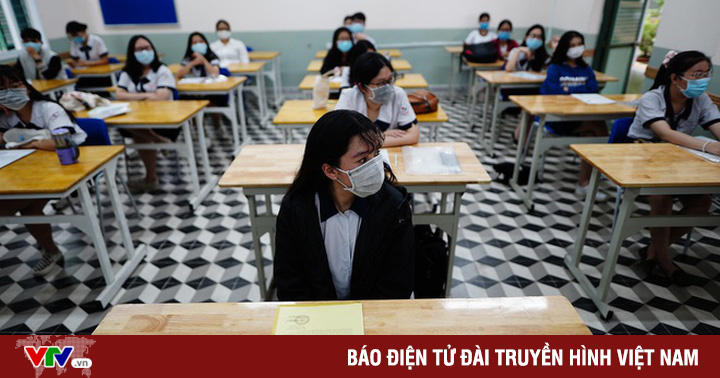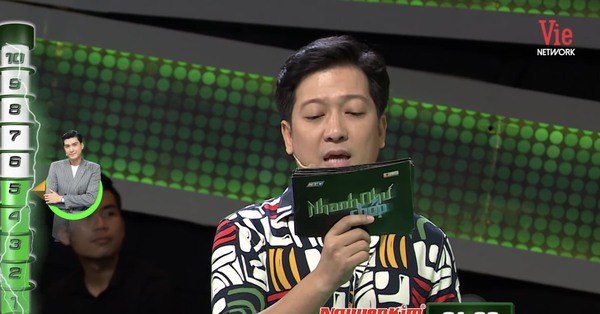Common mistakes in the 10th grade Literature exam in 2022
According to Ms. Phuong, to have a good test, first of all, students need to understand the structure of the exam. The exam consists of 2 parts with questions with all levels of awareness – understanding – low application and high application, in which, with part I, we will exploit the material in the textbook, associated with the essay. literary.
In Part II, Vietnamese language knowledge/writing will be tested, a content related to the corpus will be tested and associated with that is writing an article or a social argumentative paragraph about the issue drawn from the corpus. give.
In the form of discovery and understanding questions, the issues that need to be specifically noted are as follows:
With the discovery question type, students are required to recognize, reproduce, present, name, state, identify… the content of the problem. Frequently asked questions: please state, name, present…?:
Common mistakes students make: The question is found to be simple, but the students do not understand, do not remember the knowledge or remember not enough, do not understand the nature of the problem, so the method of expression and the narrator is still confused. , stating the incomplete composition.

Solution:
+ With the question about the mode of expression: It is necessary to carefully look at the question asking to indicate the main mode of expression or the modes of expression. With the main mode of expression, only 1 main mode of expression is mentioned, while with other modes of expression, the main mode of expression is stated in combination with other modes of expression.
Note: when determining the mode of expression of a passage, it must be placed in the overall text or work, and based on the particular characteristics of that passage.+ With the question of the narrator: It is necessary to identify the type of narrator (pay attention to the characteristics of each type of narrator) and state the effect of each narrator (with the character and the whole work).
For example: in the first person, the narrator confesses “I”, the narrator directly participates in the story, telling what he hears, sees, and experiences. The effect is to help the story become more realistic, the characters easily express their emotions, thoughts, and moods, from which the reader can better understand the character, and also contribute to the presentation of the theme. idea of the work. Or with the third person, the narrator hides himself, calling the characters by their own names. This way of narrating is very flexible, free, the events are narrated objectively, the story space is more open, and at the same time, it also contributes to expressing the themes and ideas of the work.
+ With the question about stating the composing situation and its meaning: the students need to: Identify the broad context (historical, social context); Determine narrow circumstances (year of composition, specific circumstances of life, psychology of the author when composing); State the meaning of the composing circumstances in expressing the ideas of the work’s theme.
With the discovery question form (Analyze, explain the meaning of an image detail. Frequently asked questions: “Why? Why? How? What does it mean?…):
Common mistakes students make is answering short or stating only one word, phrase, or sentence… However, with this type of question, students who don’t get the maximum score will not lose many points.
Solution:
+ With the question form “What do you think…? How do you understand an idea or problem in the text / How do you understand…? Do you agree with the writer’s point of view? Why? / Explain an opinion, thought, an affirmation, … of the author / Contact, compare, and draw lessons from what message?”, the way to do is: Read the corpus carefully; determine where words, images, problems are mentioned in the text. Choose the idea to answer, should quote the writer’s presentation verbatim. Use synonyms or words in the text and make it brief in your own words. Stick to the text content and actual personal knowledge, explain the problem. Explain your understanding of images, words, and ideas associated with specific data (Explanation of keywords; Explain your own from life knowledge; Make comments, critique to improve the problem) .
Pay special attention to the order of explanation: explain – analyze – comment on the question asked. + With the question form explaining the meaning of a story detail, the way to do it is: Master the happenings and events of the story; Master the circumstances and situations that happen to the character; Maintain the psychology and personality of the character. Put the details of the story in a specific context to explain and relate it to the details of the story before and after. Short, clear, persuasive expression.
+ With the form of questions to analyze, perceive and explain poetic words or images, the way to do it is: Master the value of the content and art of the poem, the verse containing that detail and image. Interpreting words, mastering the steps of rhetoric. Briefly, clearly, convincingly feel about the details and images of that poem. Stick to the art….
How to make articles on rhetoric
Students need to follow these steps:
– Step 1: Name the rhetorical measure (based on the features of that rhetorical measure to identify)
– Step 2: Point out words and images that use rhetoric
– Step 3: State the effect: + Associating with the concept of rhetorical measure (specificity) + Attaching to the content of the sentence (reminiscent of what? value?) + Attaching to the theme of the work or thoughts or feelings of the author. (if)
– Step 4: Can relate and expand with other poems and passages that also effectively use that rhetorical device.
How to do the word substitution exercise
Students should follow these steps:
– Step 1: Affirmation cannot be changed (the use of words is an artistic intention).
– Step 2: Figure out what the two words have in common.
– Step 3: Point out the difference of each word (put into specific corpus).
– Step 4: Affirm the author’s choice of words to increase the expressive value of the verse and at the same time express the author’s thoughts and feelings.
How to do the detailed perception exercise
Students should follow these steps:
– Step 1: Introduce and state general feelings about details.
– Step 2: Recreate the detail and determine the position of the detail in the work.
– Step 3: Feel about the artistic role of details in the story line.
– Step 4: Feel about the meaning of details in portraying the characters and expressing the ideas and themes of the work.
– Step 5: General assessment of details.
Thanh Hung (write the)
at Blogtuan.info – Source: vietnamnet.vn – Read the original article here




[url=https://nexium.store/]where can i buy nexium online[/url]
[url=http://bactrim.cfd/]bactrim without a prescription[/url] [url=http://hydroxychloroquine.email/]hydroxychloroquine 40 mg[/url] [url=http://sildenafiltabs.com/]best viagra tablets india[/url] [url=http://lopressor.shop/]lopressor iv to po conversion[/url]
[url=https://vardenafil.agency/]cheap vardenafil[/url]
[url=https://buyalbenza.monster/]albendazole price in mexico[/url] [url=https://tetracycline.cfd/]terramycin eye ointment petsmart[/url]